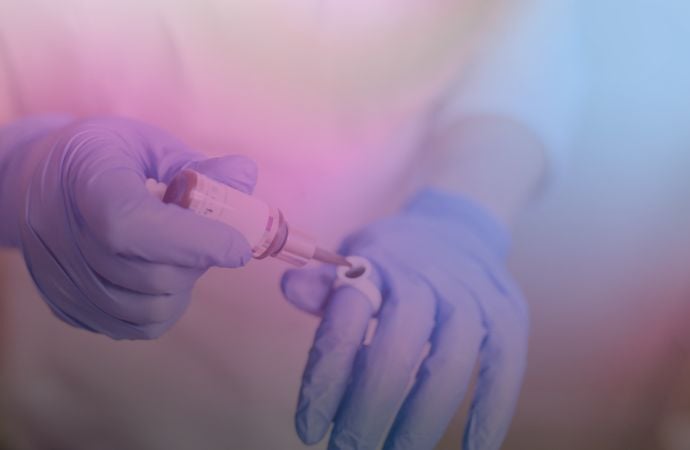In vivo CAR-T therapy using lipid nanoparticles (LNPs) represents a transformative advancement in immunotherapy, offering a radical departure from traditional ex vivo cell engineering. Conventional CAR-T therapies, while effective in certain hematological cancers, require the extraction, modification, and reinfusion of a patient’s own T cells, a process that is logistically complex, time-consuming, and expensive. In contrast, in vivo CAR-T therapy proposes a streamlined approach: reprogramming immune cells directly inside the patient’s body.
This innovative method leverages messenger RNA (mRNA) to temporarily instruct T cells to express synthetic receptors, chimeric antigen receptors (CARs), that allow them to identify and destroy disease-associated cells. These mRNA payloads are encapsulated within lipid nanoparticles, a clinically validated delivery system that protects the genetic material, facilitates cellular uptake, and ensures the message reaches the right immune cells. By circumventing the need for viral vectors and personalized cell processing, this technique holds the promise of faster deployment, reduced costs, and improved accessibility.
Furthermore, the transient nature of mRNA expression provides a built-in safety mechanism, reducing the risk of long-term side effects often seen with permanently modified CAR-T cells. This is particularly advantageous for non-cancer indications such as fibrosis, autoimmune disorders, and infectious diseases, where precise temporal control over immune activation is crucial.
In this blog post, we’ll explore the foundations of in vivo CAR-T therapy, examine its underlying technology, discuss current research breakthroughs, address scientific and manufacturing challenges, and consider the future potential of this emerging field. Whether you're a researcher, biotech professional, or simply curious about next-generation therapeutics, this overview will equip you with a deeper understanding of this cutting-edge approach to immune engineering.
What is CAR-T Cell Therapy?
Chimeric Antigen Receptor (CAR) T cell therapy is a form of immunotherapy that empowers a patient's own T cells to recognize and attack diseased cells, most commonly cancerous ones. This is achieved by genetically engineering the T cells to express synthetic receptors (CARs) that specifically bind to antigens present on the surface of target cells.
The traditional approach involves extracting T cells from the patient’s blood, modifying them ex vivo using viral vectors to introduce the CAR gene, expanding the engineered cells in culture, and finally reinfusing them back into the patient. While this method has shown remarkable efficacy in treating certain blood cancers like B-cell acute lymphoblastic leukemia and diffuse large B-cell lymphoma, it is not without significant drawbacks.
These include the high cost and complexity of individualized manufacturing, the time delay between collection and reinfusion, and the risk of serious side effects such as cytokine release syndrome and neurotoxicity. As a result, researchers are actively exploring more accessible and safer alternatives, among them, in vivo CAR-T therapy.
Why Go In Vivo?
In vivo CAR-T therapy offers a paradigm shift by bypassing the need for ex vivo cell manipulation. Instead of extracting and engineering T cells in a lab, this approach delivers the genetic instructions directly into the body using lipid nanoparticles loaded with mRNA encoding the desired CAR construct.
Once administered intravenously, these nanoparticles target circulating T cells, enabling them to transiently express the CAR and perform their therapeutic function on-site. This streamlined strategy brings several compelling advantages:
- Elimination of ex vivo manipulation: Reduces the need for complex laboratory infrastructure and personalized manufacturing.
- Reduced manufacturing costs: Simplifies production and logistics, potentially lowering the overall cost of therapy.
- Transient CAR expression: Minimizes long-term risks associated with permanently modified T cells, offering better safety control.
- Repeat dosing and wider accessibility: Enables redosing when needed and opens the door to broader patient access, especially in low-resource settings.
Altogether, in vivo CAR-T therapy represents a more agile, scalable, and potentially safer platform for immune modulation across a range of diseases.

The Role of Lipid Nanoparticles (LNPs)
Lipid nanoparticles are central to the in vivo CAR-T strategy. These nanoscale carriers protect mRNA from degradation, facilitate its uptake into target cells, and promote endosomal escape to allow translation in the cytoplasm. LNPs typically consist of four components: ionizable lipids, cholesterol, phospholipids, and PEG-lipids. The ionizable lipid is particularly important, as it becomes positively charged in acidic endosomes, aiding in membrane disruption and cargo release.
To increase specificity, LNPs can be functionalized with antibody fragments targeting T cell markers such as CD5, CD3, or CD7. These antibody-LNP conjugates (Ab-LNPs) allow for selective delivery to T cells, enabling controlled and efficient CAR expression in vivo. Moreover, optimization of LNP composition—such as lipid structure and shielding lipid density, can reduce off-target delivery, enhance immune cell uptake, and minimize liver accumulation.
By combining mRNA payload design with targeted delivery systems, LNPs serve as a modular, tunable vehicle for in vivo immune engineering.

Recent Breakthroughs in In Vivo CAR-T
Recent preclinical studies have demonstrated the therapeutic promise of in vivo CAR-T approaches using LNPs. In a 2025 study, researchers delivered mRNA encoding an anti-FAP CAR into mice using CD5-targeted LNPs. This generated CAR T cells in vivo that selectively depleted fibrogenic hepatic stellate cells, significantly reducing liver fibrosis in a model of metabolic dysfunction-associated steatohepatitis (MASH).
Similarly, other studies showcased a modular LNP platform engineered for extrahepatic targeting. These Ab-LNPs successfully transfected T cells in vivo with CAR mRNA, resulting in functional CAR T cells capable of depleting B cells and demonstrating transient, tunable activity. Notably, this approach bypassed hepatic uptake and achieved improved biodistribution through refined LNP chemistry.
Together, these studies validate the feasibility of generating CAR T cells in vivo and provide a framework for treating diseases beyond cancer, including fibrosis and chronic inflammation.
Mechanism of Action: How In Vivo CAR-T Works
The mechanism behind in vivo CAR-T therapy involves a coordinated sequence of molecular and cellular events:
- Formulation: mRNA encoding a specific CAR construct is encapsulated in LNPs.
- Targeting: LNPs are surface-modified with antibodies to direct them to pan-T cell markers like CD5 or CD3.
- Administration: The LNP formulation is delivered systemically, typically via intravenous injection.
- Uptake: LNPs bind to T cells and are internalized via endocytosis.
- Endosomal escape: In the acidic endosome, ionizable lipids facilitate membrane disruption, releasing the mRNA into the cytoplasm.
- Translation: Host ribosomes translate the mRNA, leading to transient CAR expression on the T cell surface.
- Action: CAR T cells recognize and kill target cells expressing the antigen of interest.
Because the mRNA is not integrated into the genome, expression is temporary, reducing long-term risks and allowing greater control over treatment dynamics.

Therapeutic Applications Beyond Cancer
While CAR-T therapies originated in oncology, the flexibility and safety profile of in vivo CAR-T opens the door to a wider range of applications beyond cancer:
- Fibrosis: In vivo-generated anti-FAP CAR T cells have shown efficacy in preclinical models of liver fibrosis (MASH), selectively depleting fibrogenic hepatic stellate cells and reducing pathological scarring. This suggests applicability to other fibrotic conditions, such as cardiac or pulmonary fibrosis.
- Autoimmune diseases: Transient CAR T cells could be used to eliminate autoreactive B cells or T cells in diseases like systemic lupus erythematosus or multiple sclerosis, without causing long-term immune suppression.
- Infectious diseases: CARs could be designed to target and remove infected cells, such as HIV-infected T cells, using short-term activity to reduce viral reservoirs without permanently altering the immune system.
- Solid tumors: Although challenging, in vivo CAR-T strategies could be optimized to improve delivery to tumors and circumvent the immunosuppressive tumor microenvironment, potentially expanding treatment options for epithelial cancers.
The versatility and adaptability of the in vivo approach make it a promising candidate for conditions where conventional CAR-T is either too risky or logistically unfeasible.
Scientific and Technical Challenges
Despite significant potential, several scientific and technical challenges remain for in vivo CAR-T therapy:
- Targeting precision: Achieving highly selective delivery of mRNA-LNPs to T cells is critical. Antibody-LNP conjugation (e.g., targeting CD5 or CD3) is promising, but off-target uptake must be minimized.
- Efficient endosomal escape: Even if LNPs reach the correct cell, the mRNA must escape the endosome to be translated. This is often a rate-limiting step, making ionizable lipid design a major focus of optimization.
- Formulation stability: mRNA and LNPs are both sensitive to temperature and chemical degradation. Shelf stability and reliable performance across batches require rigorous formulation and handling protocols.
- Immune responses: The innate immune system can detect foreign RNA and nanoparticle components, leading to inflammation or loss of efficacy. Strategies to reduce immunogenicity and allow repeat dosing are being actively explored.
- Dosing strategy: The transient nature of mRNA is advantageous for safety, but may require repeated dosing for sustained effects. Tolerability and pharmacokinetics must be balanced to maintain therapeutic benefit.
Solving these challenges is crucial to safely advancing this platform into human trials.
Regulatory and Safety Considerations
As with all novel therapies, in vivo CAR-T must address specific regulatory and safety concerns to move from bench to bedside:
- Non-integration of mRNA: Unlike viral vectors, mRNA does not integrate into the genome, which simplifies safety assessment. Regulatory agencies may view transient expression favorably, particularly in non-oncology applications.
- Product characterization: Regulators will require thorough validation of LNP composition, size, purity, encapsulation efficiency, and mRNA integrity. Process controls must ensure consistency between batches.
- Immune monitoring: Clinical studies must assess both acute and long-term immune responses to the LNPs and CAR expression, especially if multiple doses are planned.
- Lessons from mRNA vaccines: The rapid success of mRNA vaccines during the COVID-19 pandemic has laid a regulatory foundation for evaluating LNP-based therapies. This precedent may help accelerate early-phase trials for in vivo CAR-T.
- Patient safety: Early clinical protocols will likely use conservative dosing and focus on closely monitored endpoints like cytokine release, organ toxicity, and CAR expression duration.
Overall, in vivo CAR-T benefits from being built on validated platforms, but it must meet the same rigorous standards as all advanced therapies.
Manufacturing and CMC Development
For in vivo CAR-T therapies to become viable clinical products, robust manufacturing and chemistry, manufacturing, and controls (CMC) strategies are essential. The production of mRNA-loaded LNPs involves intricate steps, each of which impacts the product’s quality, stability, and scalability.
- Ionizable lipid design: These lipids must achieve a balance between stability, delivery efficiency, and endosomal escape. Tailoring the lipid structure—head group, linker, and hydrophobic tails—is critical for optimizing performance.
- Particle size and surface characteristics: LNPs must be consistently manufactured within a narrow size distribution (often 70–100 nm) to ensure predictable biodistribution and cell uptake. PEG-lipid content also affects circulation time and immune evasion.
- Analytical methods: High-resolution analytical techniques are needed to characterize key parameters, including encapsulation efficiency, pKa, mRNA integrity, and release profiles.
- Stability and storage: LNP formulations are thermodynamically unstable and sensitive to temperature fluctuations. Cold-chain logistics and lyophilized formats may be required.
- Scalable manufacturing: Microfluidic mixing platforms, design-of-experiment (DoE) methodologies, and automated high-throughput screening are enabling reproducible, large-scale LNP production under GMP conditions.
Addressing these manufacturing challenges early in development increases the likelihood of successful scale-up and regulatory approval.
Comparisons with Other Delivery Platforms
In vivo CAR-T therapies rely on highly efficient gene delivery systems. While LNPs are the current frontrunners, several other delivery platforms are being investigated:
- Viral vectors: Lentiviruses and retroviruses offer stable gene integration but pose safety and cost issues, making them less suitable for transient, in vivo applications.
- Polymeric nanoparticles: These systems offer customizable chemistry but often suffer from lower transfection efficiency and higher toxicity compared to LNPs.
- Exosomes and extracellular vesicles: Biocompatible and naturally occurring, they show promise for targeted delivery but face scalability and engineering limitations.
- Cell-penetrating peptides and conjugates: These offer targeted intracellular delivery but often lack sufficient efficiency or specificity.
LNPs currently provide the best balance of efficiency, safety, scalability, and clinical validation, particularly in the context of mRNA delivery.
Outlook and Future Directions
The future of in vivo CAR-T therapy is bright, with several avenues for further innovation:
- Universal CAR designs: Developing constructs that target multiple antigens or are adaptable to different diseases.
- Repeatable dosing strategies: Enhancing safety and efficacy through refined mRNA-LNP formulations that enable sequential treatments.
- Tissue-specific targeting: Engineering LNPs to deliver mRNA to tissues beyond the bloodstream, such as the tumor microenvironment or fibrotic lesions.
- Integration with gene editing: Combining CAR mRNA with CRISPR/Cas9 tools for transient yet precise immune modulation.
- Therapeutic expansion: Broader applications in autoimmune disease, fibrosis, chronic infections, and solid tumors.
As formulation chemistry, delivery strategies, and regulatory experience continue to evolve, in vivo CAR-T therapies may become a mainstay of personalized and off-the-shelf immunotherapy.
Conclusion
In vivo CAR-T therapy using lipid nanoparticles is redefining what’s possible in cell and gene therapy. By simplifying the process of CAR generation and eliminating the need for ex vivo manipulation, this approach enables faster, more accessible, and potentially safer immunotherapies.
With promising data in preclinical models of cancer and fibrosis, and ongoing innovation in LNP design and mRNA engineering, the stage is set for rapid advancement toward clinical application. The coming years will be critical for demonstrating efficacy, safety, and scalability, but the foundation has already been laid.
This emerging field holds the potential not just to improve immunotherapy, but to expand its reach to entirely new categories of disease.
When looking to transform you’re in vivo CAR-T vision into a clinical reality be sure to have the formulation, manufacturing, and delivery expertise you can trust.



.png)

